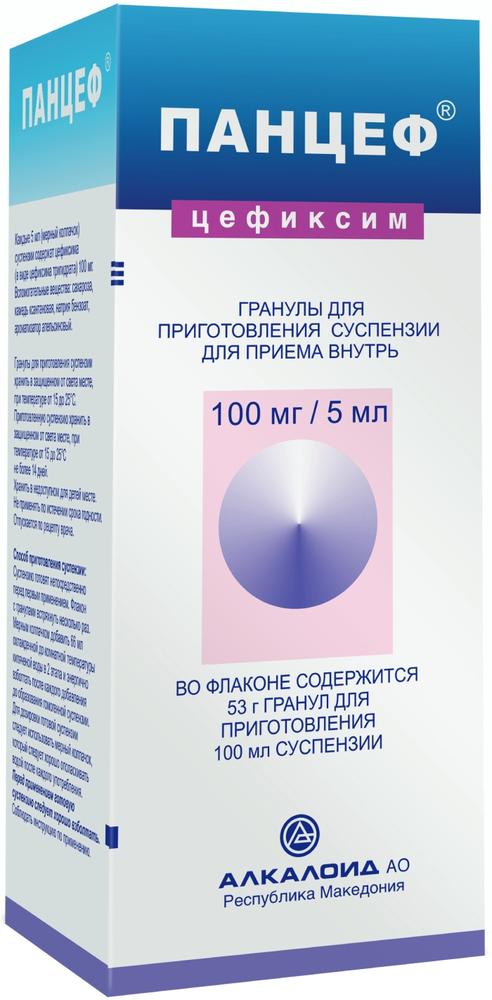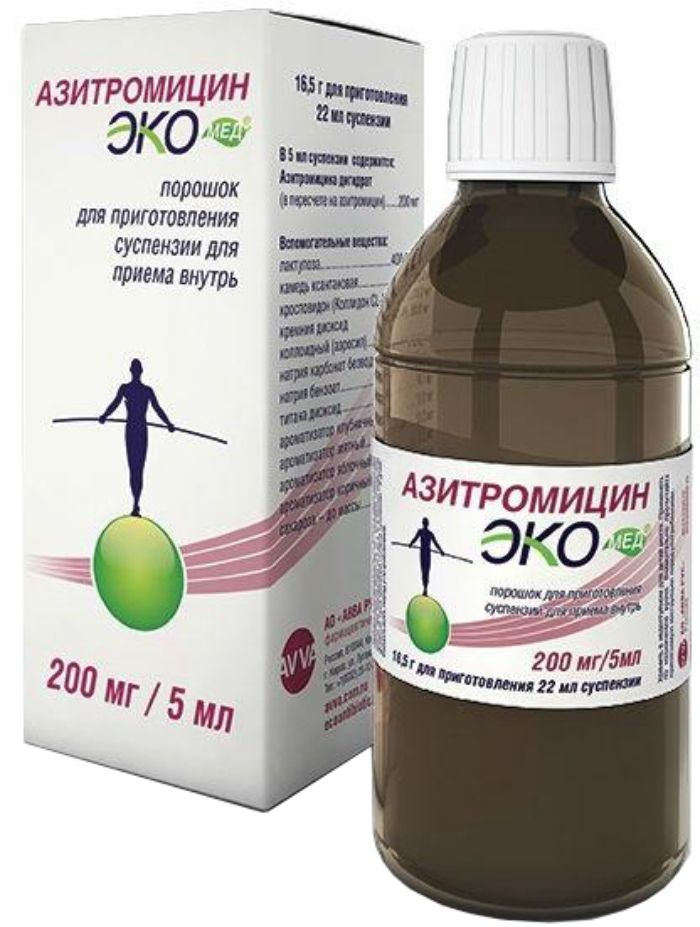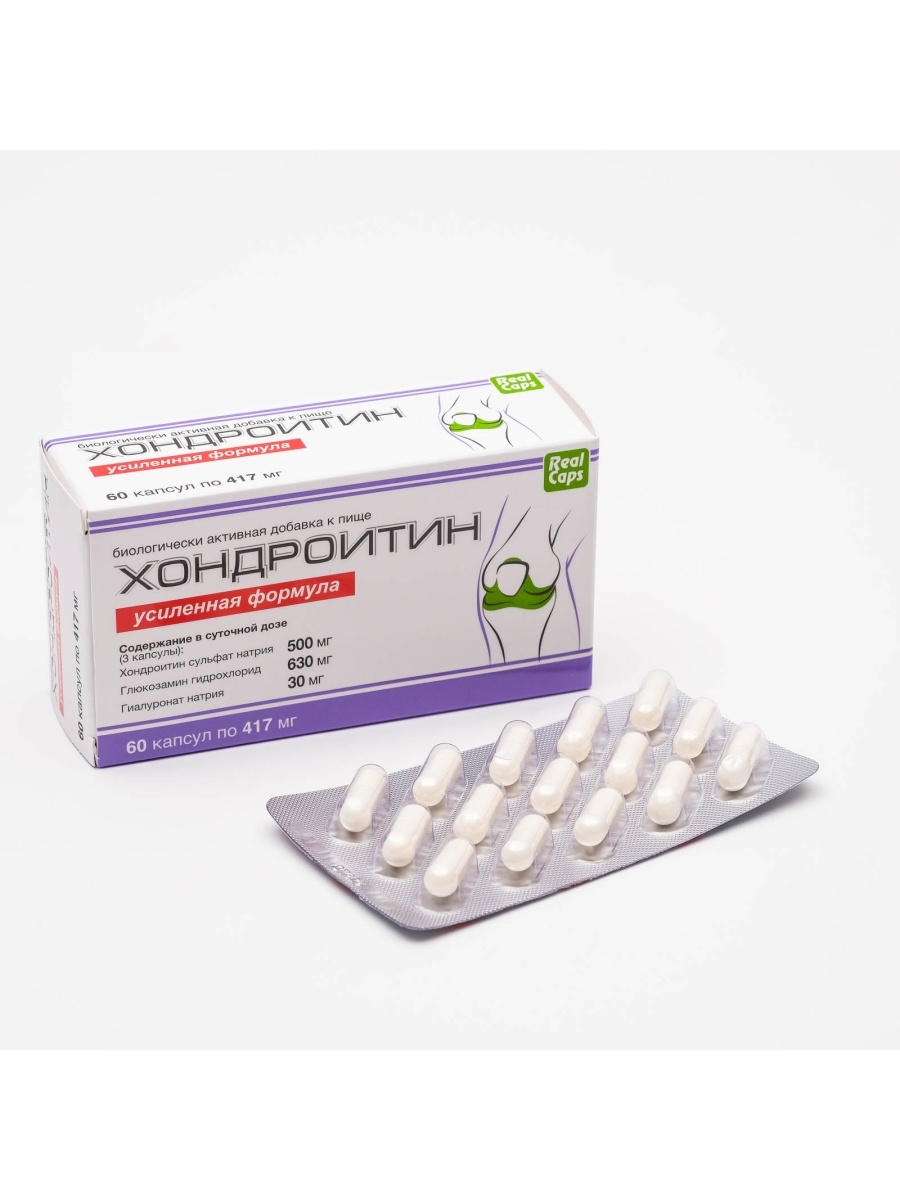- No products in the cart.
Ekomed Azithromycin powder for oral prig.susp.dlya 200mg / 5ml 16.5g vial 1 piece complete with dosing syringe

Pantsef prig.suspenzii granules for oral 53g 100mg / 5ml 100ml alkaloid
$14.93
Chloramphenicol 250mg tab 10 pc
$0.52
$7.32
Ekomed Azithromycin powder for oral prig.susp.dlya 200mg / 5ml 16.5g vial 1 piece complete with dosing syringe
SKU: 0545388379 Categories: Antibiotics, Antibiotics, antimicrobial, antiparasitic, Medicaments Tags: ABBA RUS, azithromycin
Description
Composition
Active substance:
5 ml of suspension contains: azithromycin dihydrate (based on azithromycin) – 100 mg / 200 mg ;.
Excipients:
Lactulose – 200.0 mg / 400.0 mg, xanthan gum – 15.0 mg / 15.0 mg of crospovidone (Kollidon CL-M) -65.0 mg / 65.0 mg, colloidal silicon dioxide (Aerosil) – 5, 5 mg / 5.5 mg, anhydrous sodium carbonate – 83.0 mg / 83.0 mg sodium benzoate – 16.5 mg / 16.5 mg titanium dioxide – 10.0 mg / 10.0 mg strawberry flavoring – 55.0 mg / 55.0 mg peppermint flavor – 0.5 mg / 0.5 mg, apple flavor – 13.75 mg / 13.75 mg, cinnamon flavor – 13.75 mg / 13.75 mg of sucrose to weight 3.75 g / 3.75 g
Description:
The powder is white or yellowish-white with a faint fruity odor.
A suspension from white to pale yellow, homogeneous with slight fruity odor.
Product form:
powder for suspension for oral administration 100 mg / 5 ml, 200mg / 5 ml.
16.5 g of dark glass vials with 60 ml plastic screw-on lid. 1 bottle with a syringe for dispensing and application instructions are placed in a pile of cardboard.
Contraindications
Hypersensitivity to azithromycin (including other macrolides) or other components of the formulation; severe renal failure (creatinine clearance (CC) of less than 40 ml / min); severe liver failure (class C Child-Pugh); breast-feeding; concomitant use with ergotamine and dihydroergotamine; Children under 6 months; deficit sucrase / isomaltase, fructose intolerance, glucose-galactose malabsorption; Hypersensitivity to erythromycin; ketolide.
Carefully.
Pregnancy, myasthenia gravis, human liver mild to moderate severity of renal mild and moderate severity (creatinine clearance of 40 ml / min), diabetes mellitus, patients with the presence proaritmogennoe factors (especially in the elderly): with congenital or acquired elongation interval QT, in patients receiving antiarrhythmic drug therapy class IA (quinidine, procainamide), III (dofetilide, amiodarone and sotalol), cisapride, terfenadine, antipsychotics (pimozide), antidepressan s (citalopram), fluoroquinolones (moxifloxacin and levofloxacin), impaired with fluid and electrolyte balance, particularly in the case of hypokalemia or hypomagnesemia with clinically significant bradycardia, cardiac arrhythmia or heart failure, severe; concurrent use of digoxin, warfarin, cyclosporine.
Dosage
200 mg / 5 ml
Indications
Infectious and inflammatory diseases caused by microorganisms susceptible to azithromycin: upper respiratory tract infection and upper respiratory organs: pharyngitis, tonsillitis, sinusitis, otitis media; lower respiratory tract infections, acute bronchitis, exacerbation of chronic bronchitis, pneumonia, including caused by atypical pathogens; infections of skin and soft tissues: erysipelas, impetigo, secondarily infected dermatoses; initial stage of Lyme disease (borreliosis) – erythema migrans (erythema migrans) ;.
Interaction with other drugs
Antacids (aluminum and magnesium-containing) have no influence on the bioavailability, but the lower the concentration of azithromycin in blood by 30%, so the interval between their intake should be 1 hour before or 2 hours after administration of these drugs.
While the use of derivatives of ergotamine and dihydroergotamine may increase the toxic action of the latter (vasospasm, dysesthesia).
When combined with anticoagulants indirect coumarin (warfarin) patients requires careful monitoring of the prothrombin time.
Care must be taken with co-administration of terfenadine and azithromycin, since it has been found that simultaneous reception of terfenadine and macrolide causes arrhythmia and Q-T interval prolongation. On this basis, we can not exclude the above-mentioned complications during coadministration of terfenadine and azithromycin.
While the use of cyclosporine is necessary to control the concentration of cyclosporine in the blood. With simultaneous use of azithromycin and cyclosporin dose correction needed cyclosporin. In an application with necessary control digoxin concentration in the blood of digoxin (digoxin may increase the absorption in the gut). The simultaneous use of azithromycin (1200 mg) and nelfinavir (750 mg 3 times a day) causes an increase of the equilibrium concentration of azithromycin in plasma, clinically significant side effects were observed and correction dose of azithromycin when applied simultaneously with nefinavirom not required.
While the use of zidovudine, azithromycin had little effect on the pharmacokinetics, including renal excretion, zidovudine or its glucuronide metabolite.
Azithromycin weakly interacts with the cytochrome P450 isoenzymes, it is not revealed that azithromycin involved in pharmacokinetic interactions similar erythromycin and other macrolides, azithromycin is not an inducer and an inhibitor of cytochrome P450 isoenzymes.
With simultaneous use of azithromycin and rifabutin sometimes neutropenia was observed despite the fact that neutropenia associated with the use of rifabutin, a causal relationship between the use of a combination of azithromycin and rifabutin and neutropenia is not installed.
Azithromycin concentration does not affect carbamazepine, cimetidine, didanosine, efavirenz, fluconazole, indinavir, midazolam, theophylline, triazolam, trimethoprim / sulfamethoxazole, cetirizine, sildenafil, atorvastatin, rifabutin and blood, while the application of methylprednisolone.
some were reported cases of rhabdomyolysis in patients receiving both azithromycin and statins.
Overdose
Symptoms: temporary hearing loss, nausea, vomiting, diarrhea.
Treatment is symptomatic.
pharmachologic effect
Pharmacological group:
Antibiotic-azalide.
Pharmacodynamics:
Antibacterial preparation of broad-spectrum macrolide, azalide, has a bacteriostatic action. Communicating with the 50S ribosomal subunit, inhibits peptidtranslokazu at the stage of translation, inhibits protein synthesis, inhibits the growth and reproduction of bacteria, in high concentrations has a bactericidal effect. It acts on the outside – and intracellular pathogens located. Microorganisms can be initially resistant to antibiotic action, or may acquire resistance to it.
Sensitive: Aerobic Gram-positive bacteria: Staphylococcus aureus (metitsillinchuvstvitelnye), Streptococcus pneumoniae (penitsillinchuvstvitelnye), Streptococcus pyogenes; aerobic gram-negative bacteria: Haemophilus influenzae,
Haemophilus parainfluenzae,
Legionella pneumophila,
Moraxella catarrhalis,
Pasteurella multocida,
Neisseria gonorrhoeae; Anaerobic bacteria: Clostridium perfringens,
Fusobacterium spp.,
Prevotella spp.,
Porphyromonas spp .; Other: Chlamydia trachomatis,
Chlamydia pneumoniae,
Chlamydia psittaci,
Mycoplasma pneumoniae,
Mycoplasma hominis,
Borrelia burgdorferi.
Moderately sensitive or insensitive: Aerobic Gram-positive organisms: Streptococcus pneumoniae (moderately sensitive, or resistant to penicillin).
Resistant: Aerobic gram-positive microorganisms: Enterococcus faecalis,
Staphylococci spp. (Methicillin-resistant).
Anaerobes: a group of Bacteroides fragilis.
Streptococcus pneumoniae, beta-hemolytic Streptococcus spp. group A, Enterococcus faecalis and Staphylococcus aureus (including metitsillinchuvstvitelnye strains) that are resistant to erythromycin and other macrolides, lincosamides, and resistant to azithromycin.
Pharmacokinetics:
After oral administration, azithromycin is well absorbed and rapidly distributed in the body. Bioavailability after a single dose of 0.5 g – 37% (the “first pass” through the liver), maximum concentration (Cmax) after oral administration of 0.5 g – 0.4 mg / l, the time to reach maximum concentration (TStah) – 2 -3 hours. concentration in tissues and cells 10-50 times higher than in serum. The volume of distribution – 31,1 l / kg, binding to plasma proteins is inversely proportional to the blood concentration and leaves 7-50%. Azithromycin is acid, lipophilic. Easily it passes through the blood-tissue barriers, well penetrates into the respiratory tract, organs and tissues, including prostate, skin and soft tissue. To the site of infection is also transported by phagocytes, polymorphonuclear leukocytes and macrophages where in the presence of released bacteria. Penetrates through the cell membrane and generates them in high concentrations, which is particularly important in the eradication of intracellular pathogens located.
The foci of infection on the concentration of 24-34% higher than in healthy tissues, and is correlated with the severity of the inflammatory process. It is maintained at effective concentrations for 5-7 days after the last dose.
In the liver demetiliruetsa formed metabolites are inactive. The metabolism of the drug involved isozymes CYP3A4, CYP3A5, CYP3A7, an inhibitor which he is. Plasma clearance – 630 ml / min half-life of between 8 and 24 hours after administration – 14-20 hour half-life in the range of from 24 to 72 hours – 41 hours over 50% of drug is excreted through intestine unaltered, 6% -. kidneys.
Ingestion significantly alters pharmacokinetics: Cmax increased (31%), the rate of the area under the curve “concentration-time» (AUC) does not change.
In older men (65-85 years) the pharmacokinetic parameters do not change in women increases Cmax (30-50%).
Pregnancy and breast-feeding
Azithromycin during pregnancy is recommended to be prescribed only in cases where the expected benefit from taking it to the mother outweighs the potential risk to the fetus.
During treatment with azithromycin breastfeeding stops.
Conditions of supply of pharmacies
On prescription.
side effects
From the side of respiratory pneumonia, pharyngitis, respiratory infections, rhinitis, distortion of the sense of smell, shortness of breath.
From the digestive system: nausea, vomiting, diarrhea, abdominal pain, diarrhea, flatulence, indigestion, anorexia, constipation, change the language of color, gastritis, pseudomembranous colitis, gastroenteritis, dysphagia, bloating, dryness of the oral mucosa, belching ulcers of the oral mucosa, increased secretion of the salivary glands, cholestatic jaundice, hepatitis, change in laboratory parameters of liver function, hepatic failure, hepatic necrosis (possibly fatal), hyperbilirubinemia, pancreatitis, fulminant hepatitis
Allergic reactions: itching, skin rash, dermatitis, hypersensitivity reactions, dry skin, angioedema, rash, photosensitivity, anaphylactic reaction (in rare cases, fatal), erythema multiforme, Stevens-Johnson syndrome, toxic epidermal necrolysis.
Cardio-vascular system: palpitations, arrhythmia, ventricular tachycardia, increase the interval QT, bidirectional ventricular tachycardia, decreased blood pressure, “tides” of blood to the face.
From the nervous system: dizziness / vertigo, headache, seizures, drowsiness, anxiety, paresthesia, fatigue, asthenia, insomnia, hyperactivity, aggressiveness, anxiety, syncope, myasthenia gravis, agitation, delirium, hallucinations.
From the senses: tinnitus, hearing disorder reversible hearing impairment including deafness (at high doses for a long time), impaired perception of taste and odor, visual disturbances, hypoesthesia, loss of smell, loss of taste.
From the side of hematopoiesis: thrombocytopenia, leukopenia, neutropenia, eosinophilia, lymphopenia, hemolytic anemia.
In blood plasma, increasing the number of basophils, monocytes, neutrophils, decrease or increase in concentration of bicarbonates, increase alkaline phosphatase activity, increased aspartate aminotransferase activity, alanine, potassium change in the blood plasma, increased chlorine content, increasing the glucose concentration, the increase in the number of platelets, increased hematocrit , changes in the sodium content in the blood plasma.
On the part of the musculoskeletal system: arthralgia, osteoarthritis, myalgia, back pain, pain in the neck.
With the genitourinary system: interstitial nephritis, acute renal failure, increasing concentrations of urea and creatinine in the blood plasma, dysuria, pain in the kidneys, metrorrhagia, impaired testicular function.
Miscellaneous: Candidiasis, including oral and genital mucosa; fatigue, peripheral edema, malaise, nasal bleeding, swelling of the face, fever, chest pain, sweating.
special instructions
Note for patients with diabetes mellitus: 5 ml of a suspension of 100 mg azithromycin / 5 mL of suspension contains 0.32 XE, 5 ml of a suspension of 200 mg azithromycin / 5 mL of suspension contains 0.29 XE.
In the case of missing dosing missed dose should be taken as early as possible, and subsequent -. At intervals of 24 hours Azithromycin should be taken 1 hour before or 2 hours after administration of the antacid drugs.
Use with caution in patients with impaired hepatic function mild to moderate because of the possibility of development of fulminant hepatitis and severe hepatic insufficiency. In the presence of liver disease symptoms (fast growing fatigue, jaundice, dark urine, bleeding tendency, hepatic encephalopathy) azithromycin therapy should be discontinued and a study of the functional state of the liver.
The drug should be used with caution in patients with impaired renal function mild to moderate severity. At moderate renal impairment (creatinine clearance of more than 40 ml / min) azithromycin should be under the control of renal function.
Contraindicated with concomitant use of azithromycin derivatives ergotamine and dihydroergotamine because of the possible development of ergotism.
In applying the drug, both in patients receiving and 2-3 weeks after cessation of treatment, may develop diarrhea caused by Clostridium difficile (pseudomembranous colitis). In mild cases enough discontinuation of treatment and use of ion exchange resin (cholestyramine, colestipol), in severe cases shown compensation fluid loss, electrolytes, protein, vancomycin, metronidazole or bacitracin.
Contraindicated to use drugs which inhibit intestinal motility.
Since it is possible lengthening of the interval QT patients treated macrolides, when azithromycin caution in patients with known risk factors for lengthening the interval QT: patients with presence proaritmogennoe factors (especially in the elderly): with congenital or acquired lengthening the interval QT, patients receiving antiarrhythmic drug therapy class IA (quinidine, procainamide), III (dofetilide, amiodarone and sotalol), cisapride, terfenadine, antipsychotics (pimozide), antide ressantami (citalopram), fluoroquinolones (moxifloxacin and levofloxacin), with violations of water-electrolyte balance, especially in the case of hypokalemia or hypomagnesemia, clinically significant bradycardia, cardiac arrhythmia or heart failure severe.
As with other antibacterial drugs in the treatment with azithromycin should regularly examine patients for the presence of non-susceptible organisms and signs of superinfection, including fungi.
In the application of azithromycin may develop myasthenic syndrome or exacerbation of myasthenia gravis.
The drug should not be used longer course than indicated in the instructions, as the pharmacokinetic properties of azithromycin can recommend short and simple dosing regimen.
Effects on ability to drive vehicles and mechanisms.
During the period of treatment must be careful when driving and occupation of other potentially hazardous activities that require high concentration and psychomotor speed reactions.
Storage conditions
In dry and dark place at a temperature not higher than 25 ° C.
The finished suspension was stored at 2 ° C to 8 ° C in a tightly closed vial.
Keep out of the reach of children.
Dosing and Administration
Azithromycin in the form of a suspension for ingestion administered to children 6 months. 3-day course is: the rate of 10 mg / kg 1 time a day (course dose 30 mg / kg). 5-day course: the Lyme disease (borreliosis) for the treatment of step I (erythema migrans) in children the dose is 20 mg / kg on the first day and 10 mg / kg, from 2 to 5 day diseases; course dose 60 mg / kg.
A method for preparing the suspension.
The suspension was prepared immediately prior to use.
Powder in vial shaken previously added 12 ml of boiled and cooled to room temperature water, using a syringe for dispensing, stirred to obtain a uniform suspension.
For accurate dosing suspension should use syringe which should be well rinsed with water after each application.
After reconstitution the finished suspension should be stored no more than 5 days in the refrigerator but do not freeze.
When applied in patients with impaired renal function mild or moderate dose adjustment is required; when used in patients with impaired liver function mild to moderate severity, elderly patients dose adjustment is required.
Information
Appearance may differ from that depicted in the picture. There are contraindications. You need to read the manual or consult with a specialist
Additional information
| Weight | 0.100 kg |
|---|---|
| Manufacturer | ABBA RUS |












There are no reviews yet.